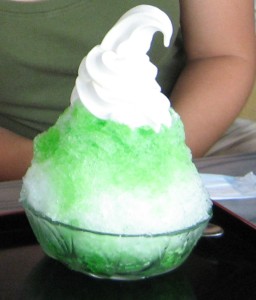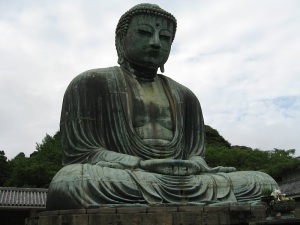 Japanese is a fun language to study, for travel purposes or to enjoy Japanese culture from afar. Because the language and the culture are both quite different from those you may be familiar with, it can be a funny experience to study Japanese as well! Here are a few things that always make me laugh when I’m studying or using Japanese.
Japanese is a fun language to study, for travel purposes or to enjoy Japanese culture from afar. Because the language and the culture are both quite different from those you may be familiar with, it can be a funny experience to study Japanese as well! Here are a few things that always make me laugh when I’m studying or using Japanese.
1.) If you want to say you ‘love’ something, as in, you ‘really like it’, in Japanese, you use the expression ‘daisuki’. This is made of two components: Dai (Big) and Suki (Like). Big Like!
2.) Japanese people worry a lot about being polite, and in Japanese this includes using different words to refer to things you want to honor, and things you want to be neutral, or humble about. Sometimes these ‘honourable’ version of words simply add a prefix. Other times they are completely different words. And sometimes there are even more categories than this, showing different degrees of honor! For example, when you talk about your boss’s car, you should probably say okuruma, instead of just kuruma.
3.) One way this manifests itself is in the names for family members. Obviously, you can’t use the same word to talk about your mother or your friend’s mother. You want to show your friend’s mother respect, but since you are talking about your mother in connection to yourself, it would be rude to honor your mother (and, by connection, yourself!). So your friend’s mother is (anata no) okaasan — (your) mother, and my mother is (watashi no) haha — (my) mother.
4.) The Japanese word for Manufacturer is Meikaa. Sound it out. This is an import word. Television Manufacturer is Terebi Meikaa. Sound it out!
5.) Japanese uses different sets of numbers to count things with different shapes. These are called counters. For example, one is ichi, but one year – issai, one bird – ichiwa, one dog or cat or insect – ippiki, one person – hitori. Although there is a ‘place holder’ counter for use when the counter is unknown, and some counters are not in common use, unique counters exist for such things as: paragraphs, footsteps, nursery trees (and stocks), bows during worship at a shrine, cannons, and theatrical acts.
6.) These numbers themselves can be made up from two different original systems – Chinese and Japanese. The basic words for four, seven, and nine, however, are problematic. Four is Shi, a word which also means death. This is unlucky, kind of like our number 13, so they replace it with the euphemism Yon sometimes (and in some cases you HAVE to say yon, such as Yoji (four o’clock)). The same goes for Ku, which means suffering and it often switched out with Kyu. Seven is Shichi, which Japanese people sometimes worry gets lost floating around next to shi (four) and ichi (one), so they sometimes say nana instead!
/Three Weeks of Japan Mania
Japanese is a fun language to study, for travel purposes or to enjoy Japanese culture from afar. Because the language and the culture are both quite different from those you may be familiar with, it can be a funny experience to study Japanese as well! Here are a few things that always make me laugh when I’m studying or using Japanese.













